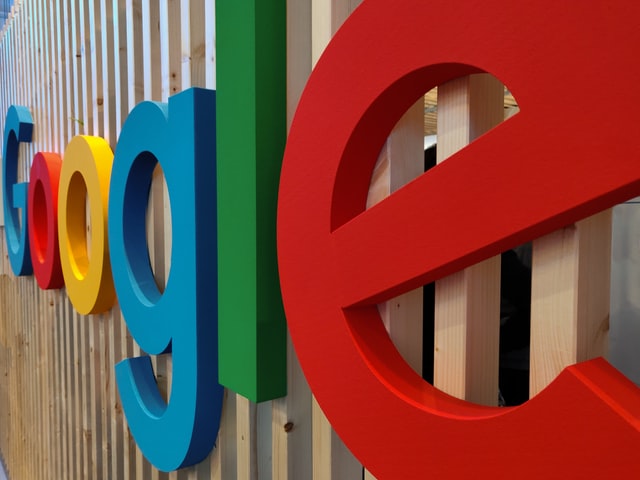Google Business Profile 101: How to Use it & SEO Benefits for Your Local Business

Google Business Profile. You may have heard of it. But you’ve most likely interacted with it before.
When you type in a local search query into Google, such as “restaurants near me,” the search engine results page (SERP) will generate a list of restaurants in the surrounding area based on their distance to your location. This list contains different Google Business Profile accounts.
A Google Business Profile is like social media for local SEO. It’s an account you create, optimize for search, and post on to attract your local target audience on Google’s platform.
Having a Google Business Profile is especially crucial for local businesses. If local customers can’t read your company reviews or your business doesn’t appear in related search results when they’re looking for location-based services or products online, you’ll become lost to your competition.
As a local business owner, we understand managing another social platform and your trade may seem daunting. Google Business Profile is free and user-friendly, making local SEO easier while reaping its benefits.
Read our complete guide to Google Business Profile and why local business owners must take advantage of it for their bottom line.

Small local business marketing illustration assisted by AI
How to Create a Google Business Profile (GBP): A Step-by-Step Guide
As mentioned above, a GBP listing supports your local SEO, which is critical for local businesses. Local SEO uses on-page and off-page SEO to increase your local visibility and traffic in the surrounding areas. It helps you reach target customers who live nearby by adhering to Google’s local search algorithm when they use related search queries for your business.
Learn how to create a GBP account, optimization tips to attract local consumers, and the benefits it offers your local business.
Create a Google Business Profile Account & Verify Your Listing
Here’s a step-by-step guide to creating a GBP account.
Google Business Profile Account Creation
To create a GBP listing, you must have a Gmail account. While you can use a personal Gmail account, we highly recommend creating a separate Gmail business account for added data security and to make your brand look more professional.
Select Your Business Name & Category
If you already have a business Gmail, go to business.google.com, and click Manage Now. You’ll enter your exact business name and category from the drop-down list. Pick a business category that best represents your company. If you’re a restaurant, you can type in a sushi restaurant. This information can be updated later, so don’t get too hung up on this part.
Add Your Business Location or Service Areas
Next, you’ll add your business address or general service areas. If you don’t have a physical store or office, you can click “No” when Google asks, “Do you want to add a location customers can visit like a store or office?” You’ll then enter the local cities you serve to attract people who live in these areas instead.
Enter Your Business Contact Information
The contact information you add is public, so ensure the phone number, email, and website are valid as people may use this to reach out to you. If you don’t have a website, you can click the option, “I don’t have a website” and hit “Next.”
Verify Your GBP Listing with Google
The last step to creating a GBP account is verifying it with Google to ensure your business is legitimate and you provide accurate information. You can skip this step for now but understand that it’s not searchable until you verify.
You can verify your GBP listing in five ways:
- Phone Call or Text: Get a verification code via call or SMS.
- Email: Get a verification code via email.
- Video Recording: Verify your business via video recording for local businesses with a physical address, like an office or storefront. Google has video recording verification rules, like unedited videos without breaks, and showing evidence your business exists, so ensure you follow their requirements.
- Live Video Call: Verify your business by joining a live video call with a GBP representative. Google has live video call verification rules, like street names and business equipment, so ensure you’re prepared before meeting with them.
- Mail: Get a verification code via postcard within 14 business days.
It takes up to seven business days to verify (except by mail) and you’ll receive a notification once you’re approved or denied. If your listing is denied, you can re-verify after you update your GBP listing information. Common reasons for verification denial, include blurry photos, insufficient evidence to legitimize your business, and dated information.
Optimize Your GBP Listing for Search Engines & Users
After your account is created and verified by Google, the next step is GBP optimization. Optimizing your GBP means adding information to your listing based on Google’s algorithms so it appears for location-based search queries.
Your GBP optimization should include:
- Image/Video File Names: Add keywords to your media file names so Google can discover them via metadata (Google’s language). Include a logo, cover image, and gallery photos/videos of your business. You can even repurpose social media content but it must follow their media specs guidelines.
- Business Description Keywords: Incorporate target keywords into your business description without keyword stuffing so it sounds more natural. Include your business hours so customers know when you’re open.
- Embed Your Social Profiles: Link your GBP listings to your social media profiles for users to learn more about your brand and support your channel’s performance.
- Product Carousel Links: Add a description, image, and website link to your product/service pages via the Product image carousel feature.
- Q&A Keywords: Include question-based keywords in your Q&A section weekly or monthly to rank for them.
- FAQ Keywords: Write question-based and non-keywords that customers frequently ask via the FAQs feature to strengthen your user experience (and rankings).
- UTM Tracking Codes: Paste UTM tracking code links to track where your traffic is coming from when they engage with your GBP.
- Local Phone Number: Use a local phone number, if possible, to improve your local search visibility and rankings.
Post Weekly to Keep Up with the Local Competition
One of the most beneficial features of GBP is that you can use it as a social media tool. You can add photo and video posts with a description that links to your website. It’s a practical feature to generate organic traffic from local consumers to your site. It also helps you stay ahead of local SEO competitors by posting weekly to maintain your online presence and keyword rankings.
Some content writing tips for GBP posts include:
- Sharing company updates like business milestones and local events you’re attending/hosting
- Giving customers advice for the industry you’re in and FAQs they have
- Using different blog sections as micro GBP posts
- Posting positive customer testimonials as social proof
- Cross-promoting specials, holiday discounts, and limited-time offers
When writing GBP posts, include target keywords, a call-to-action button (Book, Learn More, Call Now, etc.) and keep it under 100 characters. While Google allows up to 1,500 characters, keeping your post text short prevents them from being cut off in its preview. That way, if users are quickly scrolling or viewing on mobile, they can see the entire post without having to click in.
Benefits of Google Business Profile for Local Businesses
Now that you know how to create a GBP account, here’s why this platform is essential for local businesses.
Strengthens Your Local SEO to Attract Local Consumers
We’ve mentioned that GBP listings help with keyword rankings and local SEO. But, how does it exactly work? When users enter location-based keywords, like “near me” or “where to buy [product/service] in [location],” your GBP listing has the opportunity to rank in the Local Pack.
Also known as the Google Map Pack, the local pack is a feature that appears at the top of the SERPs for local intent keywords. It provides a list of three GBP listings alongside Google Maps for users to compare local competitors easily and geographically.
You’ve likely seen a Local Pack before. What makes this feature key in your local SEO efforts is its higher placement because it’s above the first result you see in the traditional SERPs.
A study shows that 42% of searchers click on Google Map Pack results because it’s one of the first things they see (source: Backlinko). Additionally, Google Consumer Insights stated that “near me” searches have increased more than 200% over the last two years!
Being one of the first listings on a Google Map Pack is more likely to generate more clicks for local search queries related to the products or services you offer.
Generates More Organic Traffic to Your Website
In addition to the Local Pack clicks, your GBP profile can generate more organic traffic to your website because it increases your local visibility online.
Customers aren’t always ready to buy. They also want to check your reviews, look at your website to learn more about your brand and compare you to the competition.
That’s why aligning local SEO and the buyer’s journey goes hand-in-hand with meeting your customers where they are. And, linking your GBP listing to your website provides more opportunities for your customers to do so.
You can link to your product pages via the Product image carousel feature for people who are ready to buy but want to compare different options first. Or, you can link to your blog from educational GBP posts for people who want to learn more about the service they want to hire (and you offer).
Creating GBP content at each funnel stage attracts all target personas because you’re providing the information they’re looking for—which, in return, promotes more organic website traffic.
Maintains Your Online Reputation
Did you know that 90% of searches read reviews before buying (source: Media Captain)? GBP reviews are arguably the most important feature of your profile. It acts as social proof when you maintain a positive online reputation—including negative reviews.
According to Ranko Media, over 50% of consumers trust mixed score ratings because it’s more authentic. Negative reviews are inevitable and your audience understands that. While you can’t control negative ratings, you can manage how you respond to them to build your brand’s credibility.
Avoid template-based responses. Offer a personalized solution with availability to discuss the issue with them to resolve it. When people see you make the effort to solve customer problems, it increases trust.
Stand Out From the Competition & Attract Your Local Customers
As a local business, it’s essential to stand out from your competition and target consumers who live nearby. People will conduct preliminary research and weigh their options before purchasing your products or services. That’s why you must invest in local SEO to rank for location-based search queries and strengthen your reputation management.
Ready to attract your local customers and better support your bottom line?
Learn more about our SEO services or contact us for questions today!
Posted in: Austin Web Design, SEM, SEO, Small Business, WWW Learning Center
Comments are closed.
Latest & Greatest
- Beyond Pretty Pictures: Why Solid Web Design Matters (More Than You May Think)
- Getting Creative with Your 404 Not Found Page Design
- Web Design Solutions: Which Option Is Right For You?
- Maximize Your Site Redesign Budget: What Texas Web Developers Need From You for a Cost-Effective Collaboration
- Responsive Web Design in Austin: Why It Matters For Your Local Business
- How to Prepare Your Website for a PR Campaign
- Why Defining Your Organization’s Strategy is Key to Brand and Marketing Development
